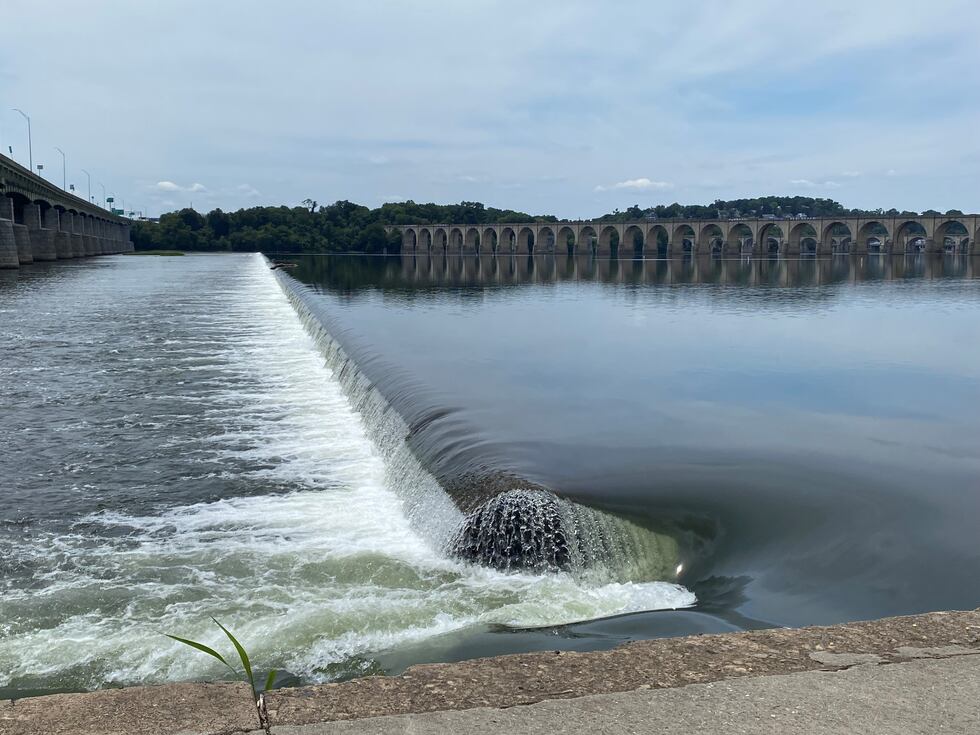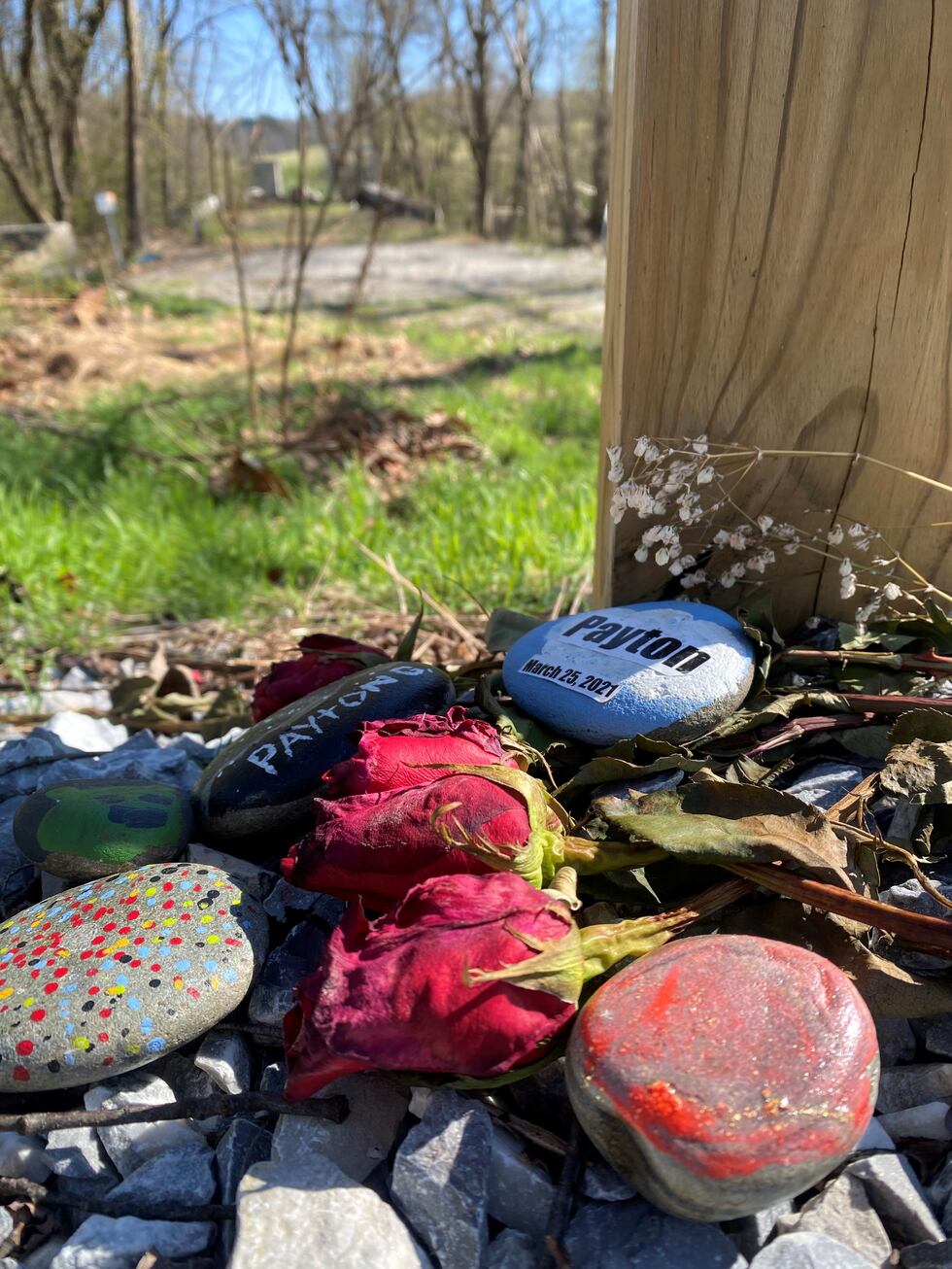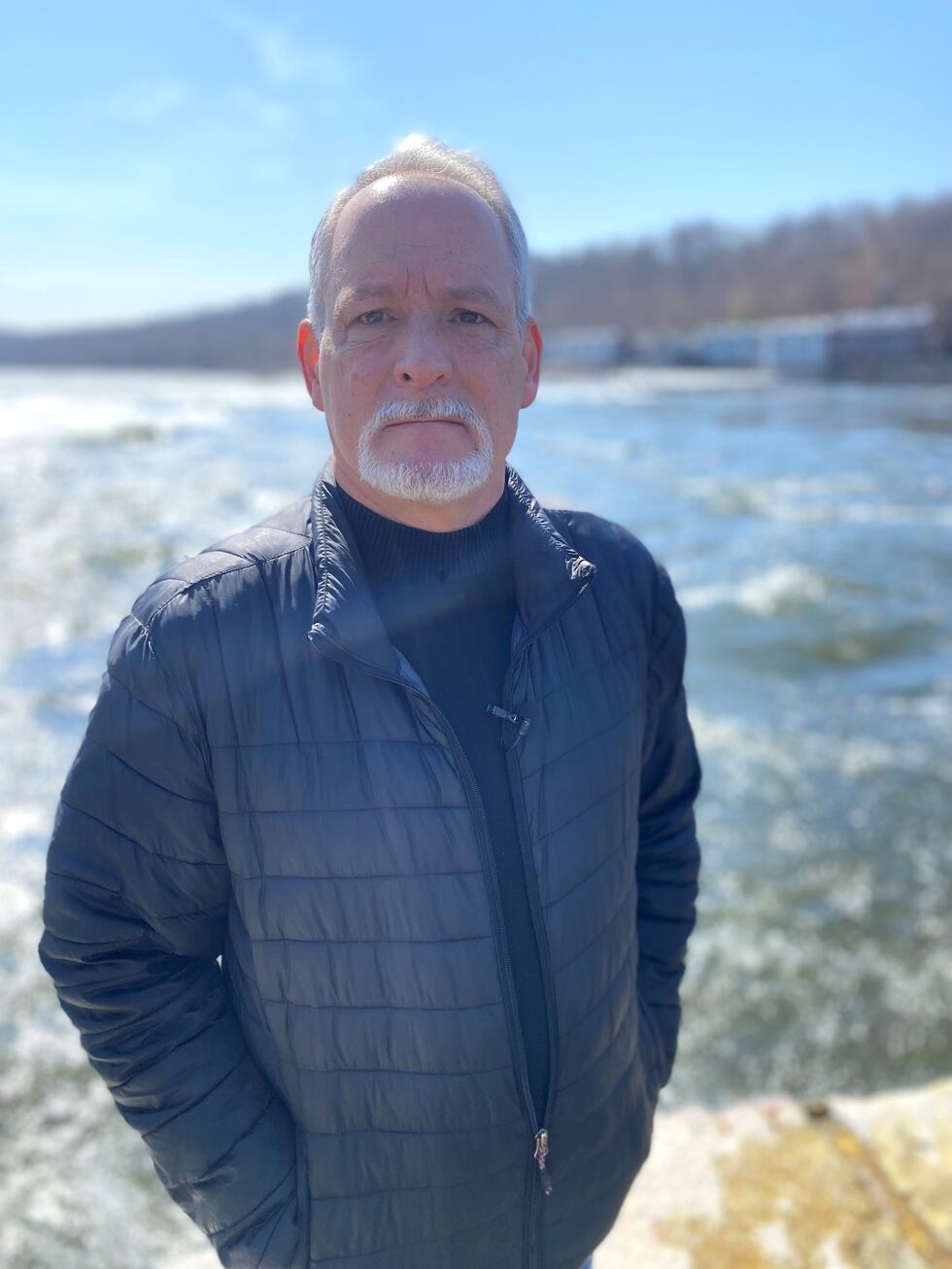New Hope, Pennsylvania (InvestigateTV) — Jonathan Gentile was called many things in his 38 years of life: father, husband, son, teacher, coach and friend, but many knew him best as an outdoorsman with a deep love of the water and kayaking.
He often shared this passion with the people he loved — even those who weren’t as keen on life in the wild — including his father, Jim.
“I like glamping. I don’t like camping, you know what I mean? But if it was going to give me time with him, that was so unique, so I did it,” he said.
It’s with that mindset that the pair headed out for a weekend kayaking trip down the Delaware River in Pennsylvania in May 2022. It was a beautiful morning of much-needed bonding for a father and son who lived at opposite edges of the state.

Jonathan, the far more experienced boater, was leading the way — with Jim paddling about 30 seconds behind — when the two came upon a low head dam near the town of New Hope, Pennsylvania.
A man-made, concrete structure once meant to control the flow of water for the nearby canal and a long-closed mill, the dam, like many low-head dams, can be practically invisible from upstream, so the Gentiles hadn’t seen it until it was too late.
Jonathan went over the dam and disappeared from sight. Jim was thrown from his kayak and surfaced — desperate to see his son’s face.
“I went into full-blown panic mode,” Jim said. “I’m screaming and screaming and swimming in and out trying to find him.”
But Jonathan was trapped — hidden beneath the water by an invisible force holding him in its grasp. It’s called a drowning machine, a scientific phenomenon that often occurs at low-head dams when rivers and creeks are at a certain level, creating a backwash that churns people trapped inside it over and over. Hundreds of people nationwide have died in this deadly spin cycle.
“As you go over, you know, you get into this hydraulic and you’ve got this aeration so even if you’re wearing a life vest, you can still have a real problem in not being able to get enough air because it’s continuing to take you down, just like the washing machine,” said Tom Smith, executive director of the American Society of Civil Engineers.
Deleware River Footage captured by Scotty Smith,, graphic created by Wade Smith
Although Jonathan was eventually spit from the current, the damage had been done. Even Jim, who’s spent a lifetime working as a nurse, couldn’t do anything to bring him back to life, given their precarious position on the rocks.
He called out to the residents of the condominiums overlooking the river for help, and emergency responders arrived several minutes later. Jonathan was taken to a nearby hospital — the very one where his father used to save lives — but the 38-year-old high school teacher was gone.
“He’s my baby. I couldn’t save him,” Gentile said. “We have to stop this. We have to warn the public.”
The danger he wants to warn about is the drowning machine phenomena that occurs at many low-head dams — the kind InvestigateTV discovered claim as many as 50 lives a year.
Despite decades of tragedy, less than a third of states record and publicize the locations of low-head dams, and the only nationwide efforts to catalogue them have been handled by volunteers from academia as well as industry and environmental organizations.
However, recent action by Congress is aimed at changing that — at least at the federal level.
Watch InvestigateTV’s previous in-depth look at the danger of low-head dams hiding in plain sight:
Locating dangerous low-head dams is often a tragic experiment, with the danger identified only after the drowning of victims who were unaware of its existence. Crowdsourcing research done by a taskforce made up of researchers at Brigham Young University, the American Society of Civil Engineers and other organizations has helped to pinpoint more than 13,000 low-head dam sites and hundreds of deaths associated with them.
However, those experts estimate those numbers are likely significant undercounts because in a majority of states, there are no official inventories of low-head dams.
“A number of different states have been very much on top of this. And then others, you know, it’s probably not as high a priority. So, we want to make sure it’s a priority in every state, so they don’t have to be reacting when somebody drowns,” Smith said.
At the federal level, low-head dams have historically fallen outside of the jurisdiction of the National Inventory of Dams — a public database that documents dam structures across the country — because they are lower in height and don’t hold back enough water to pose a major flooding threat if they were to fail.
In late 2024, however, Congress approved legislation that would start the process of adding these still dangerous and sometimes deadly dams to the inventory.
The Water Resources Development Act of 2024 requires the locations of these dams be determined and logged along with their size, ownership, physical condition and any hazards that exist.
But finding them all, experts have said, is a daunting task – with concerns the work could take years given funding challenges and other complexities.

The work to build and maintain the inventory will be done primarily by the U.S. Army Corps of Engineers, which oversees the current inventory.
The Army Corps never made anyone available for an interview despite InvestigateTV’s repeated requests, but in an emailed statement the agency said it hopes to have an initial set of data available for the public to view and search later this year, with much of the information supplied by the crowdsourcing efforts of the American Society of Civil Engineers, BYU and others.
As far as locating and cataloging additional low-head dams, a spokesperson said in a statement: “It is challenging to identify and inventory low-head dams as many of these structures do not meet state or federal regulatory criteria and may not be documented as part of an official dam safety program. During the next two years, USACE will be developing a methodology to expand the current inventory of low-head dams. This methodology will involve using known low-head dam information to validate existing datasets and identify new structures and associated data. USACE will incorporate this new, validated data into the low-head dam web viewer as it becomes available.”
Although the Army Corps was given federal funding in the 2023-2024 fiscal year to develop the inventory and “scope future needs” for the project, the agency told InvestigateTV it has not received additional funding yet this year.
One of the biggest challenges for those tasked with inventorying low-head dams is determining who is legally responsible for them — work often complicated by murky or mysterious ownership issues uncovered in property records, state and local documents and verified sources InvestigateTV examined — with some dams built more than a century ago
InvestigateTV analyzed information from the largest formal catalog of low-head dams across the nation — a database maintained by the Southeast Aquatic Resources Partnership — which identifies and prioritizes waterway barriers and dams for remediation or removal to improve fish habitats and address other environmental concerns.
Using the organization’s National Aquatic Barrier Inventory and Prioritization Tool, InvestigateTV found thousands of low-head dams with reportedly unknown or unclear owners.
More than 90 of those have been linked to at least one death, including the 2021 drowning of an 11-year-old boy at a low-head dam in central Pennsylvania that’s since been removed.
That low-head dam, which took the life of Payton Gonzalez, sat on land owned by the U.S. Army Corps of Engineers, which told a media outlet at the time that the agency had no record of a dam on the property.

In 2015, two brothers drowned at a low-head dam near Upper Sandusky, Ohio. According to court records examined by InvestigateTV, the legal battle that followed had local, county and state entities all arguing they didn’t own it — and the judge in the case found the testimony by the various entities was not “sufficient to establish which entity had either ownership of the dam or jurisdiction of the portion of the river in question.”
Smith, with the ASCE, said determining ownership, along with a more comprehensive catalogue of low-head dam locations in the national inventory, is key to improving safety before tragedies occur.
“I think it does increase accountability,” he said. “It’s increasing our education on all sides for owners, users, government officials, and that also adds to accountability so that we can be more proactive again instead of being reactive.”
Senator Kevin Cramer says having the government formally provide the public with information about low-head dams can prevent tragedies. The Republican from North Dakota is among the lawmakers who pushed for bipartisan legislation to make the national inventory of low-head dams happen.
He said he was compelled, in part, by his own memories of fishing as a child at a local dam.
“I didn’t grow up on TikTok. I didn’t have a cell phone. So, when we took our fishing rod and worms and headed out to the Kindred Dam, we were on our own,” he said. “I wouldn’t trade that upbringing for all the iPhones in the world. But that’s not where we live anymore. And also, that infrastructure is less known to children today.”
North Dakota is one of the limited number of states that has attempted to catalogue low head dams — including one in Cramer’s hometown of Kindred.
Cramer said his hope is that the national inventory will help give state and local governments an accurate picture of how many low-head dams exist in their respective jurisdictions so they can not only inform citizens but eventually prepare and plan for safety solutions where necessary.
“If we can do this inventory for states, counties, park districts, and for that matter, even private landowners, townships, then they know — they can have a sense of priorities,” he said. “[That way] you know what’s out there, what needs to be repaired.”
Cramer was clear, however, that he feels decisions about actually remediating or removing dangerous low-head dams — and the costs that would come with such work — should be left in the hands of local and state governments.
But people like Jim Gentile, whose son drowned in a low head dam, say the families of drowning machine victims have already paid too much.
“Here it is, it’s almost three years later, and it still hurts like hell every day,” Gentile said.
The pain of his son’s death haunted him so badly that he ultimately moved away from the town he loved.
“It doesn’t get easier; you just learn how to manage it,” Gentile said.

Gentile said he wants the dam that took his son’s life officially classified by the federal government as a low-head dam and added into the national inventory.
A unique structure, the New Hope Dam extends only partially into the channel of the Delaware River, meaning it does not meet the statutory definition set by Pennsylvania that would require certain safety signage.
“That doesn’t mean it’s not a low-head dam,” said Karl Kingery, one of the researchers for the national low-head dam task force — which includes the dam in its database that will likely fuel the national inventory. He said the structure meets the definition the researchers believe the federal inventory will likely use. Regardless of what it is called, Gentile said what matters is making sure more people will know about the drowning machine whose current stilled his son’s beating heart and broke his.
“The last year, I’ve just given up. I’ve really given up, and I don’t think I should have given up. I just lost energy; I lost hope. And maybe this is bringing a little bit of hope back,” he said.
Copyright 2025 Gray Media Group, Inc. All rights reserved.